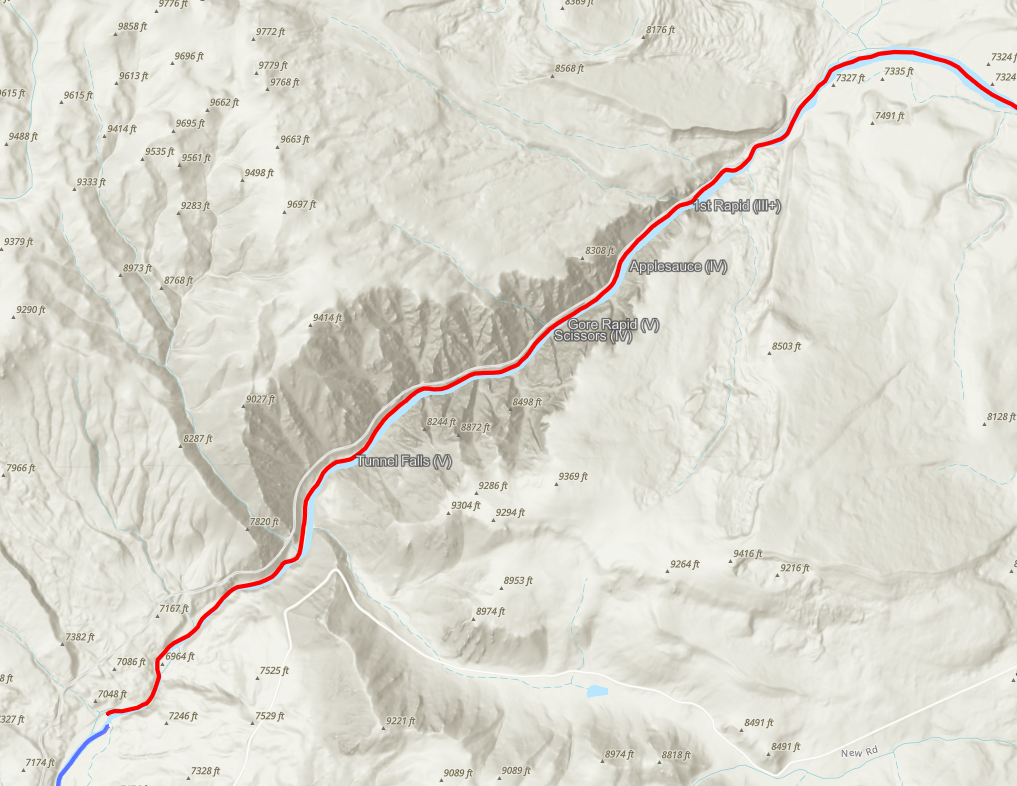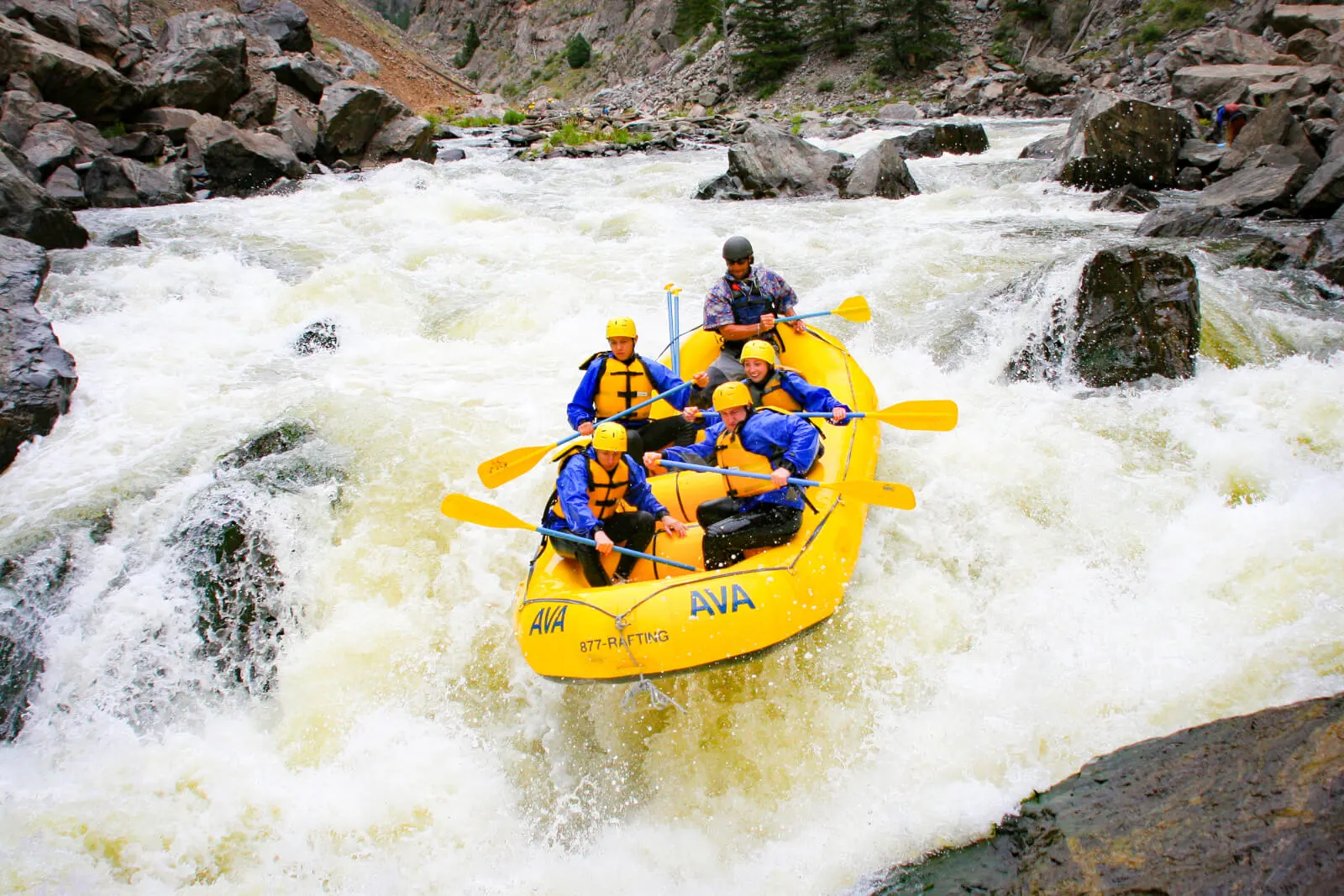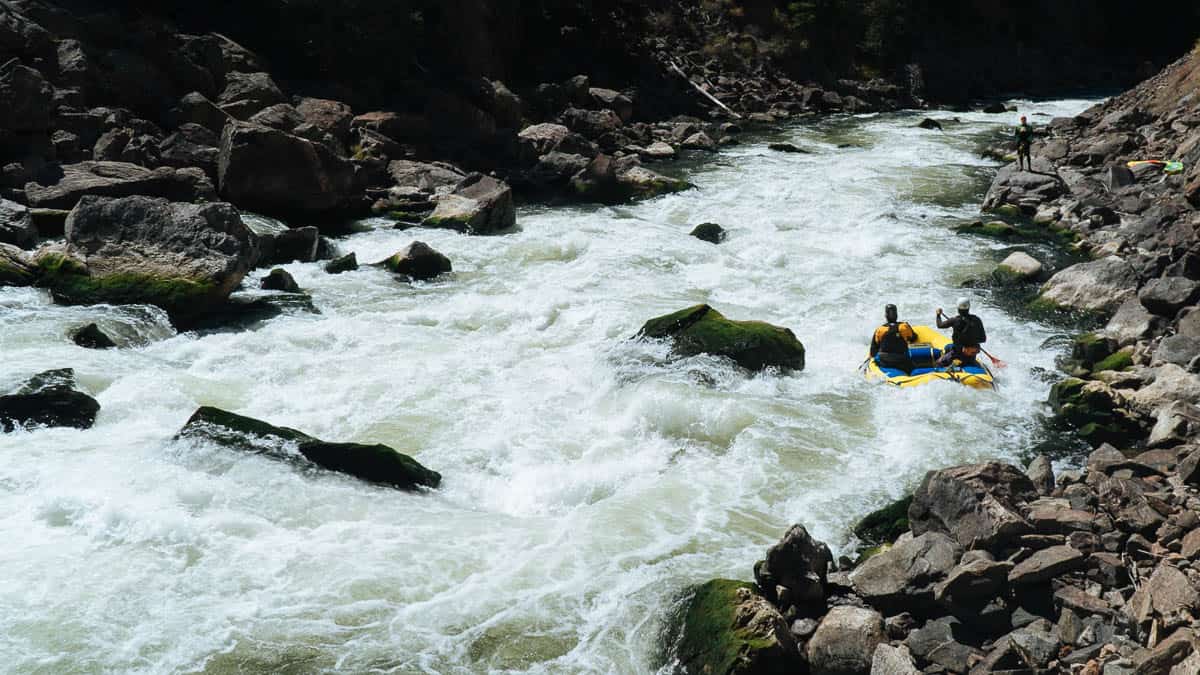Gore Canyon
Conquering the Beast: A Guide to Rafting Gore Canyon
Gore Canyon. The name itself conjures images of churning whitewater, towering cliffs, and an adrenaline rush that leaves you breathless. This infamous stretch of the Colorado River is not for the faint of heart. It's a Class V+ whitewater rafting adventure, considered one of the most challenging in North America. But for those seeking the ultimate thrill, rafting Gore Canyon is an experience that you will remember.
Before you start picturing yourself navigating monster rapids, it's crucial to assess your rafting experience. Gore Canyon is for experts only. You should be a strong swimmer in excellent physical condition, with prior experience tackling Class IV rapids. Most outfitters require a pre-trip questionnaire to ensure you're up for the challenge.
Gore Canyon isn't just about the rapids (although they are the main event). The 10-mile journey takes you through a remote river gorge, with towering cliffs creating a sense of awe-inspiring isolation. You'll encounter a variety of wildlife, and the scenery is truly breathtaking.
The rapids themselves are legendary. Names like "Applesauce" and "Gore Rapid" hint at the power and danger you'll face. There will be portages around some of the most technical sections, and even experienced rafters will need to be on their toes. But with a skilled guide and a dialed-in raft, navigating these behemoths is an unmatched whitewater experience.
Due to the difficulty, Gore Canyon trips are offered by a limited number of outfitters. Be prepared to book well in advance, especially during the prime rafting season, which typically runs from mid-July to mid-September. Trips usually depart from Kremmling, Colorado, and include all the necessary gear.
Rafting Gore Canyon is a bucket list adventure for serious whitewater enthusiasts. It's a chance to test your limits, experience the raw power of nature, and create memories that will last a lifetime. Just remember, this is an extreme sport, and requires proper preparation and a healthy dose of respect for the river's might.
Quick Facts
- Section Length: 10 miles
- Diffculty: Class V
- Typical Season: Mid July-Mid September
- Typical Peak: Late May-Early June (Not rafted during this time)
- My ideal water flows for rafting: 700-2000 CFS at the Durango Gauge
Notable Rapids
- Applesuace
- Gore Rapid
- Scissors
- Tunnel
- Pyrite Falls
- Toilet Bowl
- Kirshbaum's
A History of Gore Canyon: From Dreamers to Daredevils
Gore Canyon, a dramatic stretch of the Colorado River carved through the Rocky Mountains, boasts a rich history intertwined with exploration, transportation, and ultimately, thrilling adventure.
Long before the roar of whitewater rafting filled the canyon, the allure of a water passage to the Pacific Ocean captured imaginations. Following the establishment of Colorado Territory, the U.S. government offered a reward for such a route [2]. In 1869, a Breckenridge dreamer named Sam Adams envisioned a grand journey. He proposed navigating rivers and a short portage over Boreas Pass to reach the Colorado River and, supposedly, the Pacific via Gore Canyon [2]. This ambitious plan, unfortunately, met a watery demise as the boats constructed for the voyage were smashed on the unforgiving rapids of the canyon [2].
While the dream of a water route faded, Gore Canyon wasn't entirely untouched by human activity. Ranching families homesteaded the land near the canyon, and historic photographs capture the grandeur of the Colorado River winding through the gorge [1]. The early 20th century saw the arrival of the Denver and Salt Lake Railroad, with construction bringing foreign workers and establishing the small settlement of Radium on the canyon's north bank [3]. Radium even boasted a copper mine, a reminder of the area's resource potential [3].
The latter half of the 20th century witnessed the rise of whitewater rafting, and Gore Canyon's untamed rapids became a target for the most adventurous paddlers. The first successful raft descents occurred in the 1970s, marking the beginning of a new chapter for the canyon [1]. Today, Gore Canyon is a world-renowned whitewater destination, attracting expert kayakers and rafters who relish the challenge of its Class V+ rapids [1]. The annual Gore Canyon Whitewater Festival, held every third Saturday of August, celebrates this daring sport and even hosts the U.S. National White Water Rafting Championship [1].
Sources
- [1]:A Dream Smashed in Gore Canyon: stories.grandcountyhistory.org by Grand County Historical Association Journal
- [2]:Gore Canyon - Wikipedia: en.wikipedia.org
- [3]:Radium | Grand County History Stories: stories.grandcountyhistory.org by Grand County Historical Association
The Rocky Story of Gore Canyon: A Geological Journey
Gore Canyon's dramatic landscape isn't just a playground for adrenaline junkies; it's a captivating story written in rock. The towering cliffs and churning rapids are testaments to millions of years of geological sculpting. Let's delve into the fascinating geological history of this iconic canyon.
The story begins deep in time, with the formation of the basement rocks underlying Gore Canyon. These ancient Precambrian gneisses and granodiorites, formed over 1.4 billion years ago, are the oldest exposed rocks in the area [1]. They provide a solid foundation upon which the younger layers were deposited.
Throughout the Paleozoic and Mesozoic Eras (roughly 541 million to 66 million years ago), vast seas covered the region. Layers of sediment, including limestones, sandstones, and shales, accumulated on the seabed [1]. These sedimentary layers would later become the dramatic cliffs that line the canyon.
A pivotal moment arrived around 70 million years ago, during the Laramide Orogeny, a period of intense mountain building. Powerful tectonic forces pushed the Earth's crust upwards, creating the ancestral Rocky Mountains [2]. The Precambrian basement rocks and overlying sedimentary layers were uplifted and tilted, forming the initial framework of the Gore Range.
The relentless forces of erosion began to wear away at the newly formed mountains. Over millions of years, glaciers, wind, and especially, rivers, sculpted the landscape. The mighty Colorado River, carving its path southward, relentlessly cut through the uplifted rocks, eventually creating the dramatic Gore Canyon we see today [2].
Geologists continue to unravel the complex geological history of the Gore Range. Recent studies suggest the possibility of a vast rift system extending from Gore Canyon southwards into New Mexico, hinting at ongoing tectonic activity [3]. This adds another layer of intrigue to the canyon's story.
Sources
- [1]:Geology of the Gore Canyon-Kremmling area, Grand County: https://pubs.usgs.gov/sir/2019/5043/sir20195043.pdf
- [2]:Gore Range geology: A 'trapdoor' story: https://www.vaildaily.com/news/gore-range-avalanche-injures-a-pair-of-locals-and-a-dog-near-east-vail/
- [3]:Colorado's Gore Range: http://www.durangobill.com/
Trips Run: Private trips
Gore Canyon truly is one of the toughest single sections of whitewater I've rafted. While not as continuous as the Upper Animas, the size and shear force of the rapids are some of the biggest I've tackled.
"Friendly" levels for rafting are generally around 1000 cfs in this writer's opinion, and while I'm sure many have tackled it much higher, I'd rather be in a kayak above 1500 CFS.
I've run Gore Rapid itself twice in a raft, which makes the times I've portaged it twice as well, and I'd say for most rafters I know, it's a 50/50 on whether they run it.
Due to its technical nature, remote location, and challenging whitewater, I would recommend going on this section with a commercial company or going with someone who knows the section and the logistics of running it. Most commercial guides who run this section train for years on other sections and generally spend a training year up here where they row other guides down running as safety for commercial trips and do a check-out trip with a senior guide on the boat before they are allowed to take commercial guests.
The annual Gore Fest takes place in late August most years and if you are interested in raft racing or kayaking, this is the time and place to do Gore Canyon as there is a lot of extra safety craft in the water.
2008-2014 Kayaking
I've run gore four times in a kayak, mostly with my guiding friends James, Lange, Andy, and Kerry. Most of these runs have been around 1500 CFS but I do remember one trip in the 2500-3000 CFS range. All my run has been clean thus far, but on the high-water trip I remember being blown to the back of my kayak deck multiple times hitting the Kirshbaum's holes!
2008-2014 Rafting
Most of these rafting trips were also taken with the guides mentioned above, two trips R2 and two trips with a 3-person boat crew. On one of those trips, I brought my then-new rafting wife down with Lange guiding the boat. I didn't tell Amanda how big the section was, and this was her second time down Class V, and nothing that big. Lange did a phenomenal job guiding us that day but it's a wonder she's still with me.
Current Flow at Kremmling, CO
River Map


